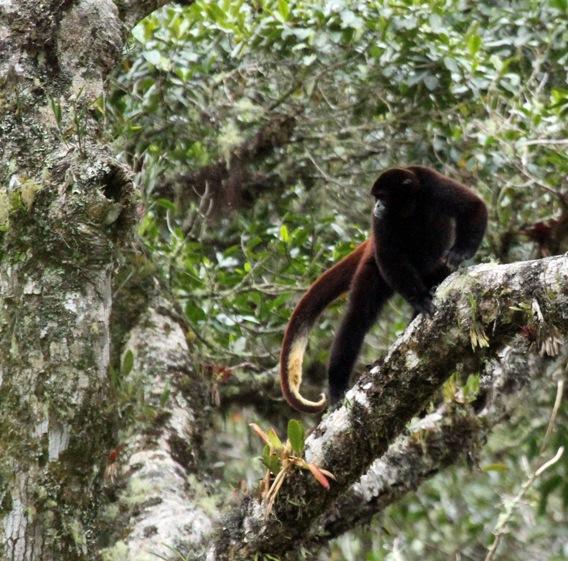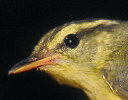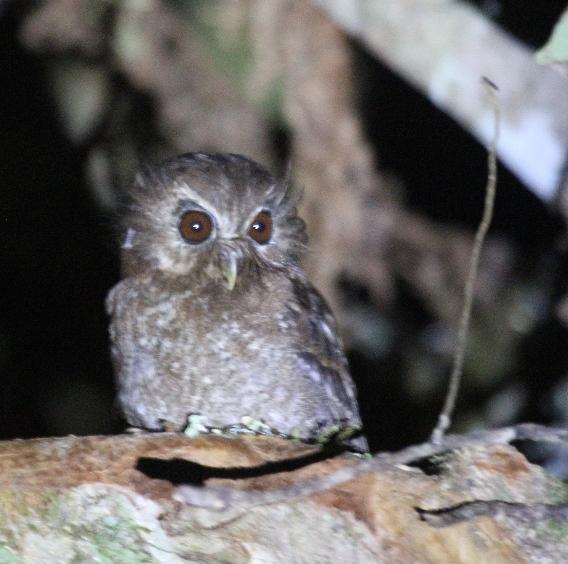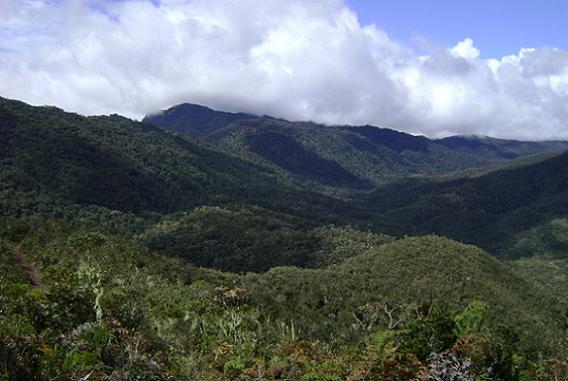It was any birders dream come true: not only to see one of the world’s rarest birds, but to discover a new unknown population. Israeli birder, Shachar Alterman, was surveying birds with the UK organization Neotropical Primate Conservation in Peruvian cloud forest when he heard and then saw the long whiskered owlet.
“At first moment I thought it was a frog, since it sounded coarser than the playback I have. But you really couldn’t mistake it for nothing else,” Alterman said in a press release. “Suddenly it felt as the whole forest is full with Lechusitas [the common local nickname for the bird in Peru]. A moment before, everything was silent, and then you just couldn’t stop hearing them calling from all different corners.” He added that “the bird itself was perched five meters above our head, gazing at us as surprised, I believe, as we were”.
Alterman’s discovery was the first sighting of the long whiskered owlet Xenoglaux loweryi since 2007. The species was only discovered in 1976 when it was caught in a mist net.
 Shachar Alterman. Photo by: Noga Shanee/NPC |
“As far as we know, this is only the fourth time this rare bird has ever been seen in the wild – and the first time it has been captured on video [see below],” says co-founder of Neotropical Primate Conservation, Noga Shanee, who also viewed the owlet. The researchers counted five individual owlets, making it the largest grouping of the birds ever recorded.
“It’s been one of the happiest moments in my life. We birders are so easy to please, just give us a new bird and we’re satisfied, but this one tops it all,” Alterman said, who spent a month volunteering with the Neotropical Primate Conservation organization. “No, but seriously, this is the first time that I feel that finding a new bird can help not only its natural habitat but a whole community. At least that’s what I pray will happen.”
The long whiskered owlet is classified as Endangered by the IUCN Red List. It is named for the long whiskers on the side of its head. Birdlife International has estimated the population to be somewhere between 250 and 1,000 individuals, but no one knows for certain.
 Yellow tailed woolly monkey. Photo by: Noga Shanee/NPC. |
The small patch of cloud forest in which the long whiskered owlets were discovered is also home to one of the world’s most endangered primates, the yellow tailed woolly monkey. The monkey, classified as Critically Endangered by the IUCN Red List, is one of the focal species for Neotropical Primate Conservation. Both the yellow tailed woolly monkey and the long whiskered owlet are threatened by deforestation of their small habitat from a growing population and extractive industries, such as mining, logging, cattle ranching, and coffee plantations. Neotropical Primate Conservation says there are less than 1,000 yellow tailed woolly monkeys left in the world.
“We are hoping that this new discovery of the Long-Whiskered Owlet’s population and the interest it will generate with birdwatchers and conservationist groups will help to further conservation efforts for this special forest,” says Shanee.
Long whiskered owlet. Photo by: Sachar Alterman / NPC.

Yellow tailed woolly monkey. Photo by: Noga Shanee/NPC.
The Npc research area at La Esperanza, Peru. Photo by: Noga Shanee/NPC.
World’s first video of long whiskered owlet.
Related articles
New possible sighting of Ivory-billed woodpecker raises hope, skepticism
(01/27/2010) A press release came out recently that claimed a new sighting and photographs of the ‘extinct’ ivory-billed woodpecker. There hasn’t been a confirmed sighting of the ivory-billed woodpecker since the 1940s when the last known population lost its habitat to clearcutting. However, the news release has brought excitement, hope, but mostly skepticism among birding blogs.
Giant guano outcroppings win protection as bird habitat in Peru
(01/25/2010) The Peruvian government has moved to protect 33 guano sites—both islands and peninsulas—as well as surrounding waters in a bid to save declining bird populations.
Photos: new bird discovered in well-known rainforest in Borneo

(01/14/2010) The Danum Valley Conservation Area in Sabah, Malaysia is a huge draw for tourists and scientists; a research station has been operating in Danum Valley since 1986. But the rainforest still has surprises left: in June two employees with a tour company named Field Guide came upon every ornithologist’s dream, a bird species entirely unknown to science.
Breeding area of ‘world’s least known bird’ discovered in Afghanistan

(01/13/2010) Named in 2007 the ‘world’s least known bird’, the large-billed reed warbler has officially lost that title as researchers with the Wildlife Conservation Society (WCS) have discovered its breeding ground in the remote Wakham Corridor in the Pamir Mountains of Afghanistan. “Practically nothing is known about this species, so this discovery of the breeding area represents a flood of new information on the large-billed reed warbler,” said Colin Poole, Executive Director of WCS’s Asia Program said in a press release.
Unique call gives away new bird species in Laos and Vietnam

(12/21/2009) A beautiful little warbler inhabiting limestone karsts in Vietnam and Laos has been named a new species. When the limestone leaf warbler ( Phylloscopus calciatilis) was first sighted in 1994 it was thought to be a member of the similar-looking species, the sulphur-breasted warbler, but ornithologists began to question that assumption when the bird produced a call significantly different from the sulphur-breasted’s.
Forgotten Species: the haunting whistle of the Anjouan scops-owl

(12/03/2009) I know a two-year-old who is already an owl expert. My friends’ daughter, Harper, can identify all of North America’s owls by photos or drawings; even more impressive she can identify them by call. There is one owl call, however, that she may never hear. The Anjouan-scops owl, native to Anjouan island apart of the Comoros island chain, is on the verge of extinction. It is so rare that for over a century it was believed to have already vanished.

